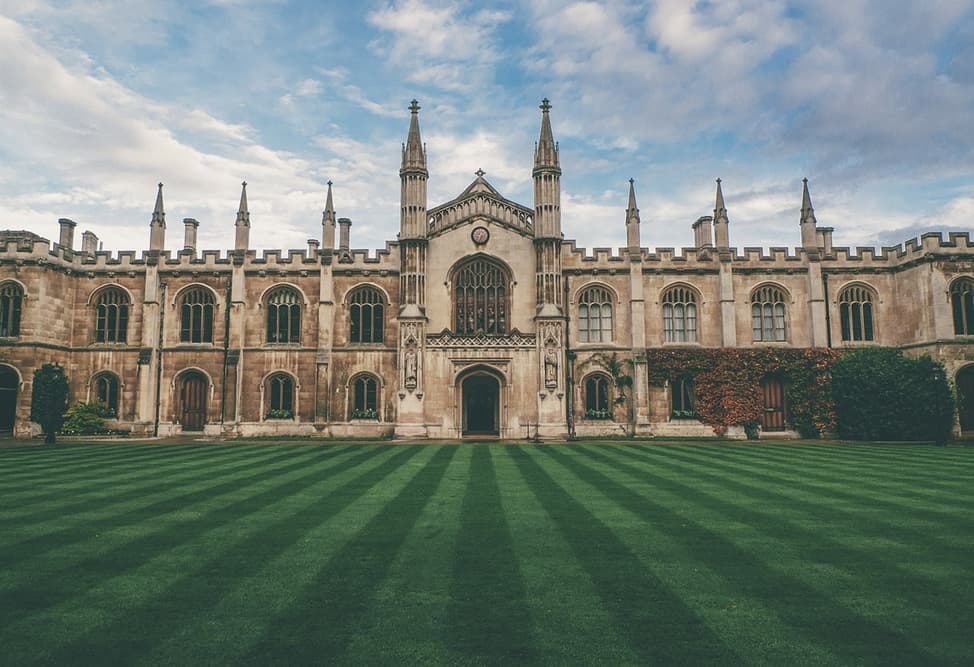Harmonizing the Arts and Education: The Role of Lincoln Center Education in Shaping the U.S. Educational Landscape
In the realm of education, the line between arts and traditional educational paradigms has often been distinctly drawn. Yet, institutions globally have begun acknowledging the symbiotic relationship that can exist between the arts and education, fostering environments where creativity meets knowledge. Setting the pace in this revolutionary approach is the Lincoln Center Education (LCE), a visionary institution with a forward-thinking perspective on educational synergy.
Overview of Lincoln Center Education
The Lincoln Center Education, rooted deeply in the rich cultural tapestry of New York City, emerged with a cardinal goal: to harmonize arts with the core educational curriculum, weaving a rich narrative where students can glean a holistic education. Since its inception, the LCE has worked tirelessly to ensure that arts find a central place not just as a subject but as a pivotal tool in the learning process, nurturing creativity and critical thinking.
Engraving its philosophy deeply in the artistic spirit, the organization uses various art forms – be it dance, music, theater, or visual arts – to enhance the learning experiences. With a rich repertoire of resources and a network of skilled artists and educators, the LCE stands as a beacon illuminating the path where education meets art, nurturing minds and crafting futures with a brush dipped in the vibrant hues of education intertwined with the arts. It has taken giant strides in revamping the educational landscape, infusing it with vibrant, artistic, and participatory learning experiences that speak to each learner’s intrinsic creative abilities.
The Landscape of U.S Education
The educational spectrum in the U.S has seen monumental changes, with critical players like the Lincoln Center Education being at the heart of it, striving to create a harmonious blend of arts and mainstream education. As we thread the path of education’s evolution, we need to visit its state before the inception of LCE, comprehend the revolutionary changes introduced, and finally, discern the current landscape.
The State Before Lincoln Center Education
Before the advent of the Lincoln Center Education, the U.S educational system maintained a more rigid approach to learning where arts were largely relegated to the background, given less emphasis in the grand scheme of things. The era witnessed:
- A predominant focus on STEM fields
- Limited integration of arts into the core curriculum
- Fewer opportunities for students to explore their artistic potentials
- Arts viewed more as an extracurricular activity than an essential component of education
This phase fostered a learning environment where the nurturing of artistic talents took a back seat, confining education to strictly traditional parameters.
The Changes Introduced
With the inception of Lincoln Center Education, a fresh wind of change blew across the educational landscape of the U.S. The organization embarked on a transformative journey, bringing the arts into the foreground of education, acknowledging it not just as a subject but a vital tool for holistic learning. It introduced groundbreaking pedagogies that encouraged artistic expressions, creative thinking, and immersive learning experiences. Students were now encouraged to see the world through a broader lens, nurturing both the analytical and creative spheres of their minds.
The Current State
As we venture into the current state, the changes brought about by Lincoln Center Education are evident. Let’s illustrate this transformation with a table showcasing the shift in focus in the U.S educational sphere:
| Aspect | Before LCE | After LCE |
| Focus of Education | STEM Dominant | Arts Integrated with STEM |
| Role of Arts in Curriculum | Peripheral | Central |
| Learning Environment | Structured and Rigid | Flexible and Inclusive |
| Student Engagement | Mostly Passive | Active and Participatory |
The table elucidates the metamorphosis of the education system, painting a picture of a richly textured landscape where the arts are no longer sidelined but have a central role, fostering a nourishing and inclusive learning environment. It is a refreshing depiction of growth, where creativity finds a harmonious rhythm with education, ushering in an era of learning that recognizes the intrinsic value of artistic endeavors in shaping agile and adaptive minds.
Harmonizing Arts and Education
Bridging the gap between arts and the mainstream educational curriculum has been a pivotal focus of modern educational reforms. This fusion advocates for a more rounded approach to education, where students are not just consumers but creators, engaged and actively participating in their learning process. Here, we delve into the various dimensions that underlie this harmonization:
- Integrated learning: An approach that ties arts into different subjects, creating a more immersive learning experience.
- Nurturing creativity: Encouraging students to think outside the box, promoting creativity through various art forms.
- Holistic development: Focusing on the development of both analytical and artistic skills for a rounded education.
- Promoting emotional intelligence: Leveraging arts to foster understanding and empathy, enhancing emotional intelligence.
The philosophy entrenched in this harmonization paves the way for a revolution in the learning landscape.
The Philosophy of Lincoln Center Education
To understand the profound impact of the Lincoln Center Education in sculpting the educational narrative, one must delve deep into its philosophy. The guiding principles steering this organization can be enumerated as:
- Aesthetic Education: This involves appreciating art not just as a subject but as a rich source of experiences that enhance learning.
- Active Engagement: Encouraging students to be actively involved in the learning process, fostering deeper connections with the content.
- Learning Through Experience: Promoting experiential learning where students learn through direct experience and reflection.
- Creative Expression: Encouraging students to express themselves through various artistic mediums, fostering creativity and critical thinking.
This philosophy stands as the backbone of the Lincoln Center Education’s mission, shaping its approach and programs.
Implementations in Schools
On entering the portals of various schools, one could witness the tangible changes brought by the LCE’s implementations. Programs which were conceived with the philosophy of holistic education were given shape in the schools. Through theater productions to art exhibitions, students have been given a platform to express themselves, blending learning with artistic expressions seamlessly. The Lincoln Center Education’s active approach has fostered environments where every classroom is a canvas, every lesson a masterpiece, sketching vivid imaginations into the educational narrative.
The Broader Impacts
The repercussions of this innovative approach have echoed far and wide, metamorphosing the very fabric of the educational ecosystem. To illustrate the broader impacts, let us review the following table:
| Dimensions | Impacts |
| Cognitive Development | Enhanced critical thinking and problem-solving skills |
| Emotional Development | Fostered empathy and understanding |
| Social Skills | Encouraged collaborative learning and team dynamics |
| Cultural Awareness | Nurtured appreciation for various art forms and cultures |
Lincoln Center Education’s Approach
As we navigate deeper into the essence of Lincoln Center Education’s methodology, it is pivotal to grasp the underpinnings of its approach — a pedagogy grounded in inclusivity and the rich tapestry of arts woven intricately with education. This journey commences as we explore the methods employed in teaching, followed by scrutinizing the role of arts in education and concluding with a glimpse into the real-life case studies that stand as testimonials to the effectiveness of this approach.
Methods of Teaching
Lincoln Center Education leverages a diverse array of teaching techniques, setting a benchmark in fostering a harmonious marriage between arts and mainstream education. From incorporating performing arts into traditional subjects to organizing workshops with artists, the teaching strategies are multifaceted. It champions the ideology of immersive learning, where classrooms transform into vibrant hubs of creativity, encouraging students to engage actively and explore different artistic mediums to enhance their learning experience.
The Role of Arts in Education
At the heart of Lincoln Center Education’s approach is the pivotal role that arts play in education. The integration of arts into the educational curriculum is not just an enhancement but a necessity. Below we highlight a few of its significant roles:
- Enhancing Creative Thinking: Arts encourage students to think beyond conventional boundaries, fostering creativity.
- Improving Engagement: Incorporating arts makes learning more engaging and interactive.
- Fostering Emotional Development: Arts help in nurturing emotional intelligence, helping students understand and express their emotions better.
- Cross-Cultural Understanding: Arts education introduces students to different cultures and perspectives, fostering a global understanding.
Arts, thus, stand not just as subjects but as instrumental allies in nurturing well-rounded individuals equipped with a global perspective.
Case Studies Showcasing Effectiveness
To truly gauge the impact of Lincoln Center Education’s methodology, it is vital to delve into real-life case studies that epitomize its success. Here are a few that stand testament to its effectiveness:
- Increased Engagement and Attendance: Schools implementing LCE methodologies have reported a significant increase in student engagement and attendance.
- Enhanced Academic Performance: Many students have showcased enhanced academic performance through the integration of arts into the curriculum.
- Positive Behavioral Changes: Students involved in these programs exhibited more disciplined and positive behavior in the school environment.
- Community Building: Through various art initiatives, schools have fostered a stronger sense of community and collaboration among students.
Benefits and Criticisms
In analyzing the harmonization of the arts and education propelled by the Lincoln Center Education, it is essential to address both the benefits and criticisms it has garnered over time. In this section, we will be elucidating the pros and cons and how Lincoln Center Education has maneuvered through the criticisms, adapting to present a refined and effective approach in the educational landscape.
Benefits of the Harmonization
Delving into the benefits of harmonizing the arts and education under Lincoln Center Education’s wing brings to light a series of advantages that have been substantiated over the years. The following points shed light on the pivotal benefits:
- Holistic Development: Students exposed to an educational landscape that is rich in artistic influences tend to have a more holistic development.
- Enhanced Engagement: The integration of arts fosters a more engaging and vibrant learning environment.
- Cultivation of Creativity: Through the integration of arts, students cultivate a creativity that transcends traditional academic boundaries.
- Emotional Intelligence: Students develop a higher degree of emotional intelligence, being able to articulate and understand emotions better.
The harmonization has indisputably sculpted a richer, more vibrant, and inclusive educational landscape.
Criticisms Faced
While the initiative has largely been welcomed, it has not been without its share of criticisms. The most pronounced criticism has been regarding the potential dilution of academic rigor. Critics argue that the inclusion of arts may divert focus from core subjects, potentially impacting the academic rigor negatively. There is also a concern about the financial implications of integrating arts comprehensively in the education system, which demands a significant investment in resources and training.
Responses and Adaptations
Lincoln Center Education has not remained static amidst the criticisms; it has showcased a remarkable ability to adapt and evolve. Here we outline some of the pivotal responses and adaptations:
| Criticism | Response/Adaptation |
| Dilution of Academic Rigor | Enhancing curriculum design to maintain a balance between arts and academics. |
| Financial Constraints | Working on partnerships and grants to ensure financial feasibility. |
| Resource Allocation | Developing strategies to optimally use available resources without compromising on quality. |
| Training and Development | Initiating training programs to equip educators with the necessary skills to integrate arts effectively. |
Case Studies
To obtain a well-rounded perspective on the impacts of the Lincoln Center Education’s initiatives, it becomes imperative to scrutinize the case studies, which bring to fore both the success stories and the challenges encountered. Let’s delve deep into these dimensions to comprehend the trajectories carved by this initiative and foresee the way forward.
Success Stories
The journey of Lincoln Center Education is punctuated with numerous success stories that reverberate in the realms of education and arts. Here, we highlight a few remarkable milestones:
- Teacher Training Workshops: Thousands of teachers have been armed with innovative tools and strategies through their training workshops, thereby catalyzing a change in the classroom dynamics.
- Community Outreach Programs: These programs have reached a vast array of communities, bringing the arts closer to people and fostering inclusivity.
- Increased Student Engagement: Numerous schools have reported an increase in student engagement and enthusiasm toward learning, owing to the vibrant arts-infused curriculum.
- Recognition and Awards: Over the years, the efforts of Lincoln Center Education have been recognized globally, with several accolades being awarded for their pioneering initiatives in harmonizing arts and education.
The stories of success reverberate globally, emphasizing the fruitful journey embarked upon by Lincoln Center Education.
Challenges Encountered
While the path has been dotted with successes, it has not been devoid of challenges. Lincoln Center Education has faced a series of hurdles, delineated as follows:
- Resource Crunch: Despite their best efforts, obtaining sufficient resources remains a significant challenge, impacting the scalability of the initiatives.
- Resistance from Traditionalist: The journey has witnessed resistance from educational traditionalists who favor a more conventional approach to education.
- Financial Constraints: Implementing a robust arts curriculum requires substantial financial backing, posing a recurring challenge.
- Balancing Academic Rigor: Maintaining the fine balance between academic rigor and artistic freedom has been a tightrope walk.
The challenges are intrinsic to the path chosen, offering opportunities for growth and re-evaluation, essential for a dynamic evolution.
The Way Forward
Looking ahead, the blueprint for Lincoln Center Education involves forging stronger alliances with communities and educational institutions globally. It strives to be a beacon of innovation, continuously evolving its methodologies to foster a harmonious integration of arts and education. The aspiration is to build a future where every learner can benefit from a rich, inclusive, and vibrant educational landscape, wherein the arts and academics walk hand in hand, enriching each other. The journey forward is laden with opportunities, harboring the potential to revolutionize the educational spheres through relentless endeavor and unwavering commitment to the cause of harmonizing arts and education.
Conclusion
As we reach the culmination of our exploration into the world of Lincoln Center Education and its revolutionary work in the realm of harmonizing arts and education, it becomes quite evident that the journey has been both fulfilling and challenging. The vivid panorama of successes is matched by the weight of the obstacles met, carving a path that is rich in learning and growth.




